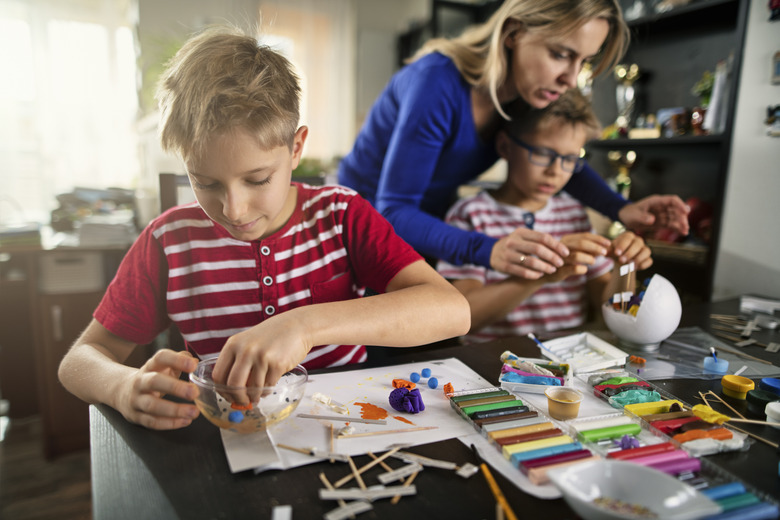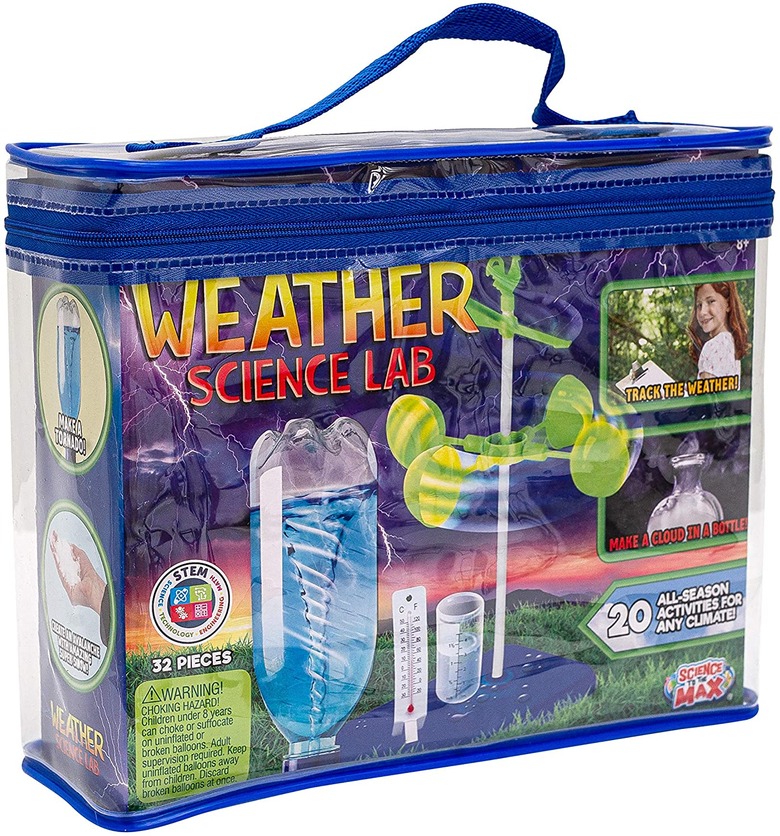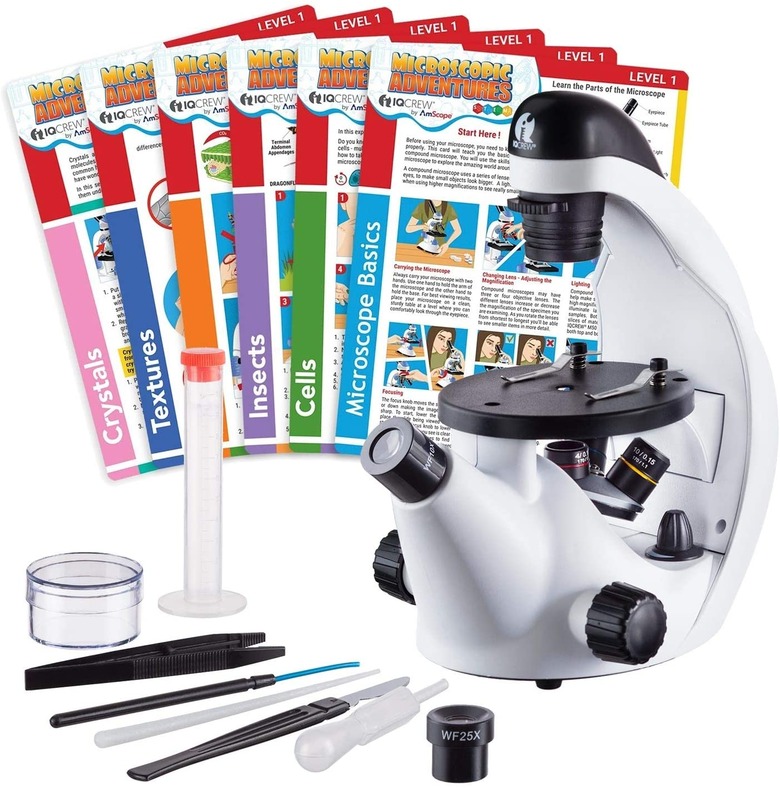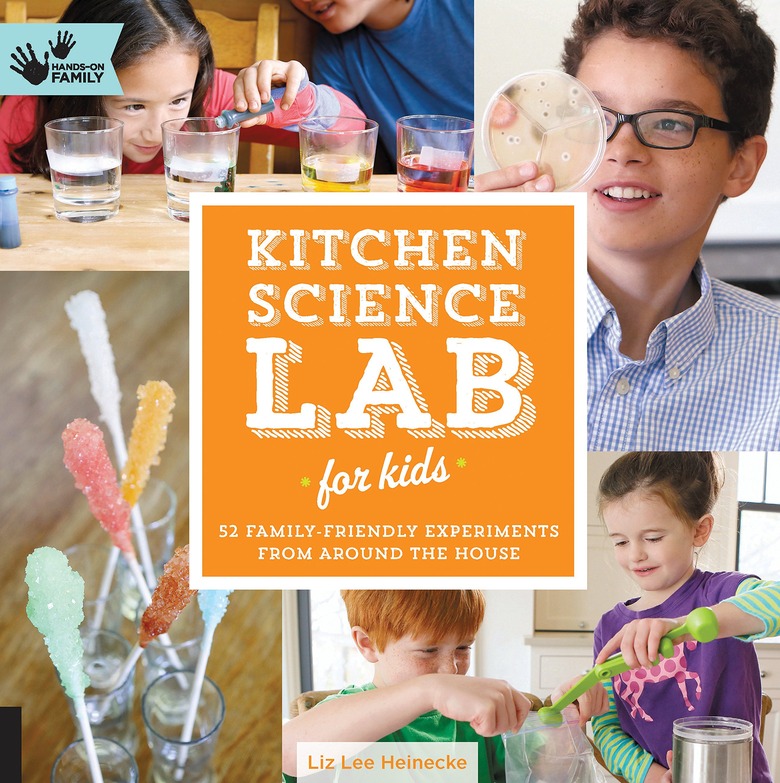Sciencing At Home: How To Turn Everyday Objects Into Science Experiments
We may receive a commission on purchases made from links.
Sciencing may earn compensation through affiliate links in this article.
Ever heard the expression "science is all around us?"
Well it's true, in more ways than one. Obviously, we're surrounded by science because our bodies (and everything else on earth) are made of chemicals. And we're constantly experiencing physics – like the force of gravity keeping us on the ground. Plus, there's the natural world: the ecosystem in your front yard, neighborhood and beyond.
But there's another meaning: that science is all around you because you've got the makings of a science experiment right in your own home. So if you're into the idea of turning everyday objects into science lessons, read on – these science activities and kits will help you make it happen.
Turn a Potato Into a Battery
Turn a Potato Into a Battery
Check your pantry – you've probably got the makings of a battery hanging out between the carrots and the onions. And with this US&ref=as_li_ss_tl'>potato battery science kit, you'll have everything you need to turn it into an electrochemical cell.
So how does it work? Well, you'll insert two types of plates into each potato: a galvanized zinc plate, and a copper plate. The zinc and the copper ions will start to interact with each other, using the water in the potatoes as a conductor, creating an electric current that works like a battery.
PS: You can use a similar principle to turn a lemon into a working clock US&ref=as_li_ss_tl'>using this lemon clock science kit.
Transform Rocks into Decorations
Transform Rocks into Decorations
Wanna create some pretty and natural home decor, and see an environmental phenomenon happen at warp speed? If so, this US&ref=as_li_ss_tl'>natural gemstone polishing science kit is ideal for you.
It's based on the principle of erosion. You might have heard that term in your nature science classes, since erosion – a gradual wearing away – affects shores, river banks and other waterways. Erosion is potentially harmful in practice, because the constant flow of the water causes the land on either side of the water to wear away. This depletes farm land, and can even lead to sediment (extra soil and sand) building up in rivers and harming aquatic species.
This gemstone polisher, however, uses erosion for a much better outcome: making pretty rounded crystals. The polisher works by using polishing powder to erode the stones you put in, softening the jagged edges and leaving you with a rounded, smooth rock.
Try out the polisher with the minerals included, or with different rocks from your environment. That pebble from your garden could take on a new (and more sparkly) look after polishing.
Turn Soda Bottle Into a Tornado
Turn Soda Bottle Into a Tornado
Do you love thunderstorms and love reading about extreme weather events? Use a soda bottle to recreate some of the most extreme weather – a tornado – safely at home, using this US&ref=as_li_ss_tl'>weather science kit.
The tornado forms via centripetal force. As the water spins around the outside of the tornado, it creates a force that pulls the air above it downwards. So you'll see a funnel form: an outer layer of spinning water, and an air "eye" of the storm that was sucked into the funnel.
The same principle applies to real life tornadoes. The force of the spinning air and debris creates a force that sucks more air and debris into the funnel, making the tornado stronger and stronger.
Of course, the homemade version isn't dangerous. So get a little creative – adding food coloring or glitter to the water makes your experiment prettier and allows you to see the funnel more easily.
Turn Household Items Into Slides
Turn Household Items Into Slides
Science is all around you – and it's easy to get a microscopic view of the world around you with this US&ref=as_li_ss_tl'>inverted microscope science kit. This microscope can be zoomed from 40x to 500x, so you can take a closer look – or a very zoomed in view – of your slides.
The kit comes with some prepared slides, so you can look at liquids, crystals and cells under a microscope easily. But you can also make your own slides. Try looking at a drop of rain or pond water under a slide to see the particles within, or scrape some pollen from a flower onto a slide to get a closer look. You'll be surprised by the microscopic structures all around you.
Transform Your Kitchen Into a Science Lab
Transform Your Kitchen Into a Science Lab
Strange but true: you've got all the supplies you need for more than 50 science experiments right in your kitchen. So this US&ref=as_li_ss_tl'>kitchen science lab isn't a kit exactly – but that's only because the only "kit" you need is already in your home, and all you need are the instructions.
Learn about crystals by making your own sugar rock candy – featuring home-grown sugar crystals. Or learn all about solutions by adding food coloring to water, then seeing what happens when you add progressively more water to the solution, lowering the concentration.
You'll also learn how to keep a science journal, which will pay off when it comes time to start your science fair project – and when you start doing more complex experiments in high school.
Cite This Article
MLA
Tremblay, Sylvie. "Sciencing At Home: How To Turn Everyday Objects Into Science Experiments" sciencing.com, https://www.sciencing.com/how-to-turn-everyday-objects-into-science-experiments-13763823/. 31 March 2021.
APA
Tremblay, Sylvie. (2021, March 31). Sciencing At Home: How To Turn Everyday Objects Into Science Experiments. sciencing.com. Retrieved from https://www.sciencing.com/how-to-turn-everyday-objects-into-science-experiments-13763823/
Chicago
Tremblay, Sylvie. Sciencing At Home: How To Turn Everyday Objects Into Science Experiments last modified August 30, 2022. https://www.sciencing.com/how-to-turn-everyday-objects-into-science-experiments-13763823/





